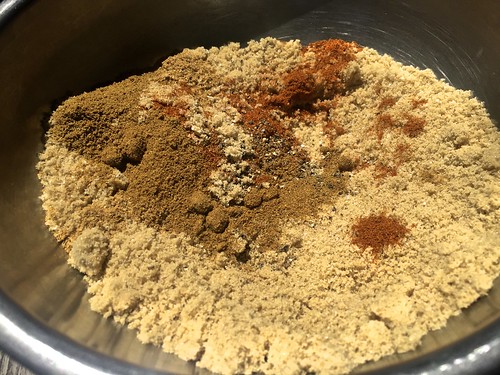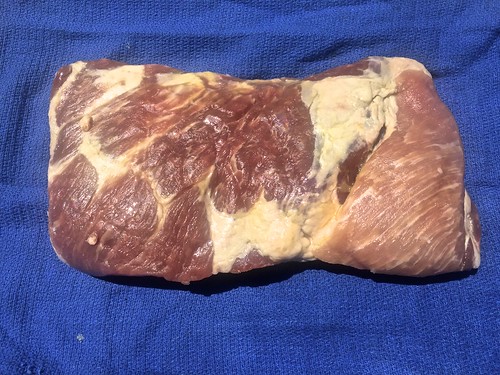Comfort food is many things to different people.
Freshly made soup with croutons
Chicken and dumplings with vegetables
Homemade pasta with roasted tomato sauce
A bone-in steak seared medium-rare in a carbon steel pan
A baked potato with sour cream and scallions
An egg salad sandwich flavored with dill on crustless Japanese white bread
And, my favorite, congee.
Necessity led to a favorite dish
I couldn't sleep one night. Too much stress, too much going on in the world to sleep through the night. I woke up at 4 am and couldn't go back to sleep. Better to get out of bed so I wouldn't disturb my wife. Walking into the kitchen, I opened the refrigerator, hoping to find something already made or a dish that would be easy to prepare.
I needed comfort food.
In the dull light, I saw there wasn't much. Wednesday was market day. This was Monday.
Searching in the refrigerator, I found a container of homemade vegetable stock I had made the day before, Japanese white rice from a take-out dinner two nights ago, a carrot, a shallot, an ear of corn, fresh shiitake mushrooms, green beans and a small piece of daikon.
Not a treasure-trove, but those ingredients sparked an idea that led to my enjoying a deliciously comforting meal just as the sun was coming up.
Cooked rice. A liquid. Sautéed vegetables. That's all I needed to make congee.
What is congee?
Visit most Chinese restaurants and you'll find a section of the menu labeled "Congee." The basic components are raw white rice and a liquid. The rice is simmered for up to an hour in the liquid, which can be water or stock made from seafood, poultry, beef or pork.
The result is a porridge-like bowl of creamy rice. Depending on the restaurant, the congee can be flavored with bits of protein or vegetables and topped with fresh scallions, fried shallots and a drizzle of hot oil.
Inspired by traditional congee, my version is very different
I use cooked rice added at the very end so my "congee" isn't creamy. Depending on my mood, I may add a great deal of vegetables and a protein and a smaller amount of rice. Purists might say I am making soup with rice, but in my telling of the tale, I add a lot more rice than you would find in 'soup with rice.'
With my approach, the results are infinitely variable. The only constants are cooked rice and a liquid.
Another variable is the ratio of broth to rice. For dry, cook the rice in the soup until most of the liquid is gone. For wet, cook the rice very briefly in the soup. Sometimes I like the congee with practically no broth. On a cold morning, lots of soup with the rice is the way to go.
The rice
You can make congee out of any kind of cooked rice.
Most of the time, I use Japanese short grained white rice or Chinese long grained rice. But, Thai brown rice, Middle Eastern basmati rice or Vietnamese broken white rice would also work. I have even used basmati rice flavored with almonds and orange peel from my favorite Armenian restaurant, Adana (6918 San Fernando Road, Glendale 91201, 818/843-6237).
Each rice creates a different result. The cooking time, amount of liquid used and the end result will change depending on the rice.
Cooking tip: if the cooked rice you find in the back of the refrigerator has dried out, no worries. Cooking the rice in a liquid will reconstitute the grains. If you see mold, toss the rice.
Generally speaking, one cup of cooked rice will serve one person. The ratio of rice to proteins and vegetables is a matter of personal taste.
The stock
I always use homemade stock. To make vegetable stock, during the week I freeze vegetable peelings. On the weekend, I add them to a pot of boiling water, simmer 60 minutes, strain and, voila, homemade vegetable stock. Whenever we make a chicken dish, I save the bones, fat and skin, cover with water, simmer 60 minutes, strain and cool. The resulting vegetable or chicken stock can be refrigerated or frozen in an air tight container.
In a pinch, sautéing a goodly amount of vegetables and adding water will pull out flavors from the vegetables. That creates enough homemade stock for your congee.
Homemade stock will produce the healthiest, freshest flavors. Store bought stock whether fresh in the deli department, packaged in cans or boxes or even dehydrated can be used, but the salt content tends to be high and the quality unpredictable.
I have used all kinds of broth. Sometimes I'll use the miso soup I brought home from a Japanese restaurant or I'll make stock by boiling left-over Thai bbq honey pork ribs or turkey stock from a Thanksgiving feast or chicken stock made with the bones from a roast chicken.
Making your own stock means you control the quality and flavor, so I recommend keeping 16 and 8 ounce containers of frozen stock in the freezer so you are always prepared to make a delicious savory meal at a moment's notice.
And, as I mentioned above, in a pinch, use water added to the sautéed vegetables to create a spur of the moment stock.
Vegetables and proteins
Use fresh vegetables or left-overs. Roasted vegetables from last night's dinner or bok choy and broccoli from Chinese take-out can be chopped into bite sized pieces and added to the congee. My go-to base ingredients are fresh, chopped onions, carrots, kale, shiitake mushrooms, green beans, daikon, broccoli stems or crowns and Savoy cabbage leaves, if I have them and corn kernels when in season.
For a protein, tofu, chicken, pork, fish and shellfish are good to add. Use cooked or raw proteins, knowing that the cooking times will be different for each. Cooked proteins only need to be reheated. Raw proteins can take longer, although fish and shellfish cook very quickly. Tofu can be added along with the stock.
Vegan or omnivore
Use ingredients you like. Stick with plant-based and make a best-ever vegan congee with homemade vegetable stock, rice of your choice and all the vegetables that make you happy.
If you're an omnivore, just about any animal protein or seafood works well. Use any protein you enjoy. Cooked meats with a lot of flavor, like bbq brisket or Vietnamese bbq pork or roasted dark chicken meat will add layers of flavor. Raw pieces of fish filets, crab, shrimp or lobster, add flavor to the broth as they cook.
Congee with Scallions and BBQ Pork
As with all cooking, if you use quality ingredients, the resulting dish will taste better and be healthier.
Every element added to the congee should build to a final, layered conclusion. You can keep the result simple, like a piano recital, emphasizing the "quiet" of the stock and the rice or jazz it up with a composition with rhythms of hot, sour, sweet and savory.
I often add bbq pork from my frequent trips to Little Saigon south of LAX. From my home, the drive takes under an hour, barely enough time to catch up on The Daily, one of my favorite podcasts. On the return trip, I listen to the news and happily eat a Bánh mi from Bánh Mì Saigon ( 8940 Westminster Blvd., Westminster, CA 92683, (714) 896-8782) next to My Thuan, a favorite supermarket.
Cut all ingredients into small bite-sized pieces, the easier to pick up with chop sticks.












